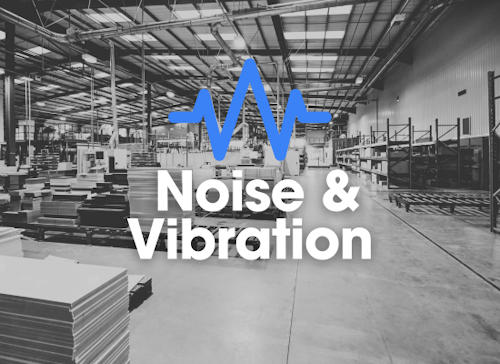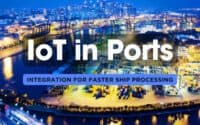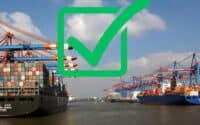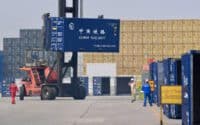Essential Guide to Noise and Vibration Control on Ships

One of the often-overlooked aspects that significantly influence these factors is the management of noise and vibration on ships. These elements not only affect the structural integrity of vessels but also play a crucial role in the health and performance of the crew and the compliance with stringent environmental regulations. This comprehensive guide delves into the intricacies of noise and vibration control, offering valuable insights and practical solutions to help ship and fleet owners navigate these challenges effectively. Whether you’re looking to retrofit an existing vessel or design a new ship with optimal noise and vibration management in mind, this guide provides the essential knowledge and actionable tips you need to enhance your maritime operations.
* Please send feedback/suggestions to editor @ shipuniverse.com
Noise and vibration aboard ships are not just mere nuisances but are significant factors that affect the operational efficiency and safety of maritime vessels. Noise is any unwanted sound that can range from the humming of machinery to the roar of the engine. Vibration, on the other hand, refers to the oscillations or repetitive movements of various components within the ship, often caused by imbalances or misalignments in rotating machinery.
Sources of Noise:
- Machinery: Engines, turbines, generators, and compressors are primary sources.
- Operational Equipment: Winches, cranes, and other deck equipment during operation.
- Human Activities: From daily operations to communication among crew members.
Sources of Vibration:
- Main and Auxiliary Engines: Often the most significant source, especially if there are alignment issues.
- Propulsion Systems: Including propellers and shafts, particularly when they experience cavitation.
- External Environment: Waves, wind, and interactions with the water.
The Science Behind Noise and Vibration
Understanding how noise and vibration are generated and transmitted through ship structures is crucial for effective control strategies.
Generation of Noise and Vibration:
- Mechanical Sources: Typically involve the movement of machinery parts which can produce both airborne and structure-borne noise. Vibration arises from mechanical forces and imbalances within the machinery.
- Hydrodynamic Sources: Flow of water around the hull and propeller actions can create pressure variations that manifest as both noise and vibration.
Transmission Paths:
- Airborne Transmission: Noise travels through the air and enters the ship via openings or through the hull and superstructure.
- Structure-borne Transmission: Vibration spreads through the ship’s structure, potentially converting to airborne noise or causing wear and fatigue in materials.
Impact of Noise and Vibration on Crew Performance, Ship Integrity, and Environmental Compliance
Impact on Crew Performance
Excessive noise and vibration can severely impact crew health, safety, and efficiency:
- Hearing Loss: Prolonged exposure to high noise levels can lead to temporary or permanent hearing impairment.
- Communication Barriers: Noise makes communication difficult, which can impair operational safety and efficiency.
- Fatigue and Stress: Continuous exposure to noise and vibration can cause physical and mental fatigue, reducing alertness and potentially increasing the risk of accidents.
Impact on Ship Integrity
Vibration and noise can also affect the structural health and longevity of the ship:
- Material Fatigue: Constant vibration can lead to fatigue in structural components, hastening wear and potentially leading to failures.
- Loosening of Components: Vibration can cause fasteners and fittings to loosen over time, compromising the integrity of critical systems.
Environmental Compliance
Noise and vibration can extend beyond the ship, affecting marine life and leading to regulatory scrutiny:
- Marine Life Disturbance: Noise pollution can interfere with the communication, navigation, and feeding behaviors of marine animals, leading to ecological imbalances.
- Regulatory Compliance: Increasingly, international and local regulations require ships to meet specific noise and vibration standards to minimize environmental impact and ensure crew safety.
10 Tips to Improve Noise and Vibration on Ships
Reducing noise and vibration on ships not only enhances the working environment but also contributes to the longevity and efficiency of the vessel. Here are the top 10 practical tips to help mitigate these issues:
Tip 1: Implement Regular Maintenance Schedules for Machinery
- Purpose: Prevents the exacerbation of noise and vibration due to wear and tear.
- Action: Establish and adhere to a strict maintenance routine for all onboard machinery to ensure they operate smoothly and quietly.
Tip 2: Use Anti-Vibration Mounts and Isolation Techniques for Heavy Machinery
- Purpose: Minimizes the transmission of vibration from machinery to the ship structure.
- Action: Install anti-vibration mounts and employ isolation techniques such as flexible couplings and dampers.
Tip 3: Opt for Quieter Machinery and Equipment During Upgrades or Replacements
- Purpose: Directly reduces the source of noise.
- Action: Choose equipment designed with noise reduction technologies when upgrading or replacing old machinery.
Tip 4: Enhance Hull and Superstructure Insulation
- Purpose: Blocks external noise and prevents internal noises from escaping.
- Action: Use sound-absorbing and insulating materials in the construction or retrofitting of the hull and superstructure.
Tip 5: Employ Advanced Damping Materials and Techniques
- Purpose: Reduces resonance and absorbs vibrations.
- Action: Integrate modern damping materials and techniques in the design of critical ship areas to attenuate vibrations.
Tip 6: Design and Install Bespoke Acoustic Panels in Critical Areas
- Purpose: Specifically targets and reduces airborne noise in areas where crew members spend the most time.
- Action: Custom-design and fit acoustic panels in areas like the bridge, crew quarters, and control rooms.
Tip 7: Utilize Soft Flooring Materials in Areas with High Foot Traffic
- Purpose: Dampens noise generated by footsteps and equipment movement.
- Action: Install carpets, rubber mats, or specialized acoustic flooring in corridors, workspaces, and common areas.
Tip 8: Regularly Train Crew on Operational Practices That Minimize Noise and Vibration
- Purpose: Empowers crew members to actively contribute to noise and vibration reduction.
- Action: Provide training on best practices such as smooth machinery operation, proper shutdown procedures, and identifying symptoms of escalating vibration.
Tip 9: Conduct Periodic Vibration Analysis to Identify and Address Potential Issues
- Purpose: Early detection of abnormal vibrations that could indicate problems.
- Action: Use vibration analysis tools to routinely assess the state of machinery and structures, allowing for timely corrective measures.
Tip 10: Engage Expert Consultants for Specialized Noise and Vibration Assessments and Solutions
- Purpose: Brings in-depth expertise to tackle complex issues.
- Action: Hire specialists in noise and vibration to conduct thorough assessments and recommend advanced solutions tailored to your specific needs.
The Impact of Noise and Vibration
Understanding the consequences of noise and vibration on ships is crucial for prioritizing mitigation strategies. These impacts affect not only the immediate operational environment but also have long-term effects on crew health, equipment longevity, and environmental compliance.
Effects on Crew Health and Safety
Noise and vibration within a maritime setting can significantly compromise the well-being and safety of the crew:
- Hearing Impairment: Prolonged exposure to high levels of noise can lead to temporary or permanent hearing loss, making it crucial to maintain noise levels within safe limits.
- Communication Difficulties: Excessive noise can hinder verbal communication among crew members, increasing the risk of misunderstandings and errors during critical operations.
- Physical and Mental Fatigue: Continuous exposure to low-frequency vibration and loud noise can cause severe fatigue, reduce concentration, and increase the likelihood of operational mistakes.
- Stress and Well-being: Chronic noise and vibration exposure is linked to higher stress levels, potentially leading to anxiety and reduced overall mental health, affecting crew morale and efficiency.
Impact on Ship Equipment and Structural Integrity
The integrity of ship structures and equipment can also be adversely affected by uncontrolled noise and vibration:
- Accelerated Wear and Tear: Vibration can cause mechanical components to deteriorate faster than usual, leading to frequent breakdowns and increased maintenance costs.
- Structural Damage: Persistent vibration can lead to structural fatigue, particularly in the welds and joints of the ship’s framework, posing a risk to the vessel’s structural integrity and lifespan.
- Operational Efficiency: Equipment that is constantly subjected to high levels of noise and vibration may not operate optimally, leading to inefficiencies and increased operational costs.
Environmental and Regulatory Implications
Noise and vibration extend beyond the confines of the ship, affecting the marine environment and necessitating adherence to specific regulations:
- Impact on Marine Life: Noise pollution in the water can disturb the natural behavior patterns of marine wildlife, including communication, reproduction, and navigation.
- Regulatory Compliance: Many international and national bodies have set stringent guidelines on noise and vibration levels to mitigate their environmental impact. Non-compliance can result in hefty fines and restrictions.
- Reputational Risk: Failure to manage noise and vibration effectively can also affect a company’s reputation, particularly as environmental concerns become more prominent among stakeholders and the general public.
Technologies and Solutions for Control
Controlling noise and vibration on ships is critical for ensuring operational efficiency, crew safety, and environmental compliance. The maritime industry utilizes a variety of technologies and solutions designed to mitigate these issues effectively. Here’s an overview of the most prevalent and effective strategies:
Overview of Current Technologies and Solutions Used in the Industry
The maritime industry employs several key technologies to manage noise and vibration:
- Active Noise and Vibration Control Systems: These systems use sensors and actuators to detect and counteract unwanted noise and vibrations in real-time.
- Anti-Vibration Mounts: These are used to decouple machinery from the structure of the ship, reducing the transmission of vibrations.
- Soundproofing Panels: Installed in various parts of the ship to reduce the transmission of airborne noise.
- Floating Floors: A type of deck construction that incorporates a damping layer and an air gap to isolate vibrations from the rest of the ship structure.
Detailed Discussion on Isolation, Damping, and Absorption Techniques
- Isolation Techniques: Isolation involves physically separating the source of the vibration from the rest of the ship using flexible mounts or suspensions. This technique is effective for large machinery such as engines and generators.
- Damping Techniques: Damping involves the conversion of vibrational energy into a small amount of heat, thus dissipating the energy. This can be achieved through the use of viscoelastic materials or damping coatings applied directly to the vibrating surfaces.
- Absorption Techniques: Sound absorption materials are used to reduce noise levels within a space. These materials, such as acoustic foam or fibrous mats, absorb sound energy and convert it into heat, preventing it from reflecting back into the space.
Advances in Material Science and Engineering that Contribute to Noise and Vibration Reduction
Material science plays a pivotal role in advancing the effectiveness of noise and vibration control technologies:
- Smart Materials: Materials that can change their properties in response to changes in their environment, such as temperature-sensitive polymers or shape memory alloys, offer new ways to control noise and vibration dynamically.
- Nano-Enhanced Materials: These materials can provide better sound absorption or damping properties due to their micro-structural characteristics.
- Composite Materials: Composites can be designed to have high stiffness-to-weight ratios, excellent damping properties, and tailored acoustic properties to reduce both noise and vibration transmission effectively.
Design Strategies for Noise and Vibration Reduction
Effective design strategies are crucial in reducing noise and vibration right from the initial stages of shipbuilding or when retrofitting existing vessels. Here’s how thoughtful design can influence noise and vibration levels and some considerations to keep in mind.
How Ship Design Influences Noise and Vibration Levels
The design of a ship plays a fundamental role in how noise and vibration are generated and managed:
- Hull Shape and Structure: The shape of the hull can affect how water flows around the ship, which in turn influences vibration and noise levels. Streamlined hulls can reduce turbulence and associated noise.
- Machinery Layout: Strategic placement of machinery can minimize the transmission of vibrations through the ship’s structure. Isolating heavy machinery in areas where impact on the crew is minimized and using flexible mountings can significantly reduce noise levels.
- Material Choices: Using materials with inherent damping properties can help absorb vibrations before they spread, reducing both structure-borne and airborne noise.
Considerations for New Ship Designs and Retrofitting Existing Vessels
- New Designs: For new ships, integrating noise and vibration control into the design phase allows for a comprehensive approach. This can include everything from the selection of low-noise machinery and equipment to the incorporation of advanced materials and isolation techniques.
- Retrofitting: For existing vessels, retrofitting can be more challenging due to space and structural limitations. Solutions might include adding damping and isolation materials, upgrading machinery mounts, and installing floating floors or acoustic panels.
Regulatory Framework and Standards
The regulatory landscape for noise and vibration on ships is shaped by international and national standards designed to protect crew health, ensure safety, and minimize environmental impact. Understanding these regulations and ensuring compliance is crucial for maritime operations.
Overview of International and National Regulations Concerning Noise and Vibration on Ships
- International Maritime Organization (IMO): The IMO sets global standards, including those for noise levels in living and working areas aboard ships, as outlined in the IMO Resolution A.468(XII), “Code on Noise Levels on Board Ships”.
- International Convention for the Safety of Life at Sea (SOLAS): While primarily focused on safety, SOLAS includes provisions that affect ship design and operation, indirectly influencing noise and vibration control.
- National Regulations: Countries may have their own additional standards and regulations that address noise and vibration. For example, the United States follows regulations enforced by the Coast Guard and the Occupational Safety and Health Administration (OSHA) concerning occupational noise exposure.
- Classification Societies: Entities like Lloyd’s Register, DNV GL, and ABS provide specific guidelines and certifications for noise and vibration on ships, often exceeding the minimum requirements set by the IMO.
How to Ensure Compliance with These Regulations
- Regular Audits and Inspections: Conduct regular audits and inspections to ensure that noise and vibration levels are within the legal limits. Use of certified instruments and techniques is essential for accurate measurement.
- Training and Awareness: Crew and technical staff should be trained on the importance of noise and vibration control and familiarized with compliance practices.
- Maintenance and Upgrades: Maintain machinery and structural components in optimal condition. Consider upgrades or retrofitting with noise and vibration reduction technologies where necessary.
- Documentation and Reporting: Keep detailed records of noise and vibration measurements, mitigation efforts, and maintenance actions. This documentation is crucial during inspections and audits.
Future Trends in Regulatory Frameworks
- Stricter Standards: As awareness of the health and environmental impacts of noise and vibration grows, standards are likely to become stricter. This could include lower allowable limits and broader scopes covering more areas of the ship.
- Technological Integration: Future regulations may require ships to incorporate specific technologies, such as active noise control systems, as standard components.
- Environmental Considerations: Increasing concern over the impact of underwater noise on marine life may lead to new regulations aimed at reducing such emissions from ships.
- Global Harmonization: Efforts may increase to harmonize noise and vibration standards across different regions and regulatory bodies to simplify compliance for ships operating internationally.
Monitoring and Maintenance
Effective monitoring and maintenance are critical components in managing noise and vibration on ships. These practices not only ensure compliance with regulations but also enhance the operational efficiency and safety of maritime vessels.
Techniques and Tools for Monitoring Noise and Vibration Levels on Ships
- Vibration Analyzers and Meters: These tools are used to measure the intensity and frequency of vibrations emanating from machinery and ship structures, helping to pinpoint potential issues before they become severe.
- Sound Level Meters: Employed to assess noise levels throughout the ship. These meters are crucial for ensuring that noise does not exceed safe and regulatory limits, especially in crew living and working areas.
- Structural Health Monitoring Systems: Advanced sensors can be embedded within the ship structure to continuously monitor vibrations and stress, providing real-time data that can be used to assess the condition of the ship over time.
- Thermal Imaging Cameras: These can be used to detect overheating components, which might be a source of increased vibration or noise due to malfunction or wear.
Effective Maintenance Practices to Control and Reduce Noise and Vibration
- Routine Alignment and Balancing: Regular checks and adjustments to machinery alignment and balance can significantly reduce vibration levels and prevent premature wear and tear.
- Lubrication Management: Proper lubrication of moving parts is essential to minimize friction, which can cause excessive noise and vibration. Implementing a lubrication schedule based on manufacturer recommendations or real-time monitoring data can be highly effective.
- Tightening and Fastening Protocol: Ensuring that all bolts, screws, and other fasteners are tightened to the correct torque specifications can prevent loosening, a common source of increased vibration and noise.
The Role of Predictive Maintenance in Managing These Issues
- Predictive Analytics: Utilizing data from monitoring tools, predictive analytics can forecast potential failures and suggest maintenance activities before problems escalate. This proactive approach helps in scheduling maintenance tasks during non-critical operations, thereby minimizing downtime.
- Condition-Based Monitoring: Instead of following a fixed maintenance schedule, condition-based monitoring allows maintenance to be performed based on the actual condition of the equipment. This method can detect abnormalities in noise and vibration patterns that indicate wear or impending failure.
- Integration with Ship Management Systems: Modern ships can integrate vibration and noise monitoring into their overall management systems, allowing for centralized control and more efficient handling of maintenance and compliance.
Effective management of noise and vibration on maritime vessels is not only a regulatory requirement but also a critical factor in ensuring the operational efficiency, safety, and environmental compliance of shipping operations. By understanding the sources and impacts of these issues, employing advanced technologies and materials, and integrating robust design and maintenance strategies, ship owners and operators can significantly enhance crew comfort and extend the lifespan of their vessels. Furthermore, staying informed about and compliant with the evolving regulatory landscape is essential for maintaining standards and preparing for future challenges.
Additional References
- The American Bureau of Shipping (ABS), which provides research and technical guidelines: www.eagle.org
- The Maritime and Coastguard Agency (MCA) of the UK, offering guidance on maritime safety and environmental standards: www.gov.uk/government/organisations/maritime-and-coastguard-agency
- The National Institute for Occupational Safety and Health (NIOSH), which includes research and training on occupational noise exposure: www.cdc.gov/niosh
- Bureau Veritas (BV), providing certification and classification services for maritime industry standards: www.bureauveritas.com
- Det Norske Veritas (DNV), known for their expertise in technical assessments and risk management in the maritime sector: www.dnv.com
- Transport Canada Marine Safety and Security, which enforces marine regulations and safety standards in Canada: www.tc.gc.ca/eng/marinesafety
- Federal Maritime Commission (FMC), regulating international ocean transportation for the U.S. and protecting the public from unfair and deceptive practices: www.fmc.gov
- Australian Maritime Safety Authority (AMSA), responsible for the regulation and safety oversight of Australia’s maritime industry: www.amsa.gov.au
- Maritime New Zealand, providing safety, security, and environmental protection for coastal and inland waterways: www.maritimenz.govt.nz

Do you have a Maritime Product or Service that may be of interest to Shipowners? Tell us about it here!
Do you have feedback or insights? Please reach out to editor @ shipuniverse.com



